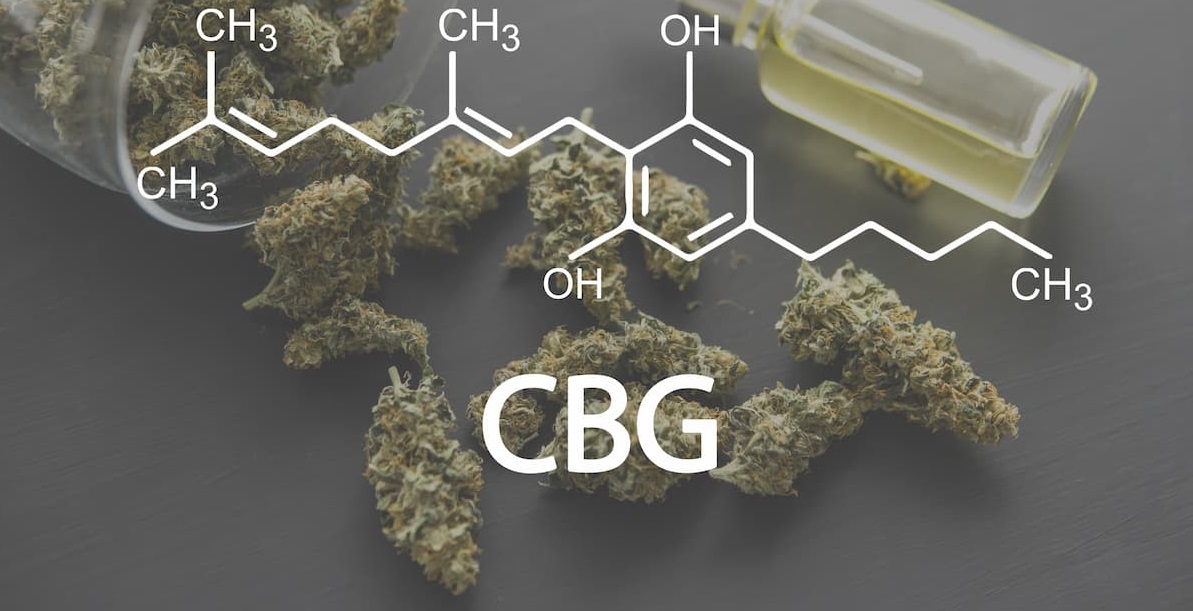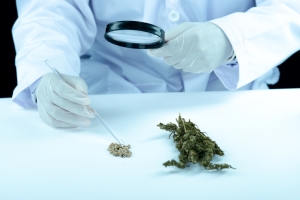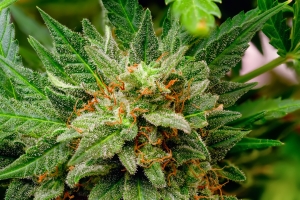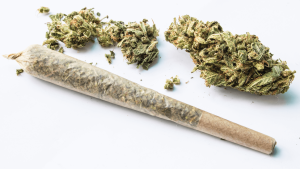What is CBG?
As interest in cannabis continues to grow, more people are curious about lesser-known compounds like Cannabigerol (CBG). Often overshadowed by CBD and THC, CBG is gaining recognition for its unique properties and potential health benefits. In this section, we’ll dive into what makes CBG special and how it compares to other well-known cannabinoids.
What is Cannabigerol (CBG)?
Cannabigerol (CBG) is often referred to as the “mother of all cannabinoids” because it is the precursor to many other cannabinoids, including CBD and THC. This means that cannabis plants produce CBG first, and as the plant matures, CBG converts into these other compounds. Unlike THC, CBG is not a psychoactive cannabinoid, so it doesn’t cause a high. Instead, it interacts with the body’s cb1 and cb2 receptors, potentially offering various health benefits such as an anti-inflammatory effect.
Definition And Chemical Structure Of CBG
CBG is a key cannabinoid that helps create other cannabinoids like CBD, THC, and CBC as the cannabis plant matures. It’s more abundant in young cannabis plants, which is why researchers extract it early to study its effects. Since CBG is found in smaller amounts in mature plants, it’s considered rare and valuable. Scientists are particularly interested in how CBG interacts with the body’s receptors, as this could explain its potential therapeutic benefits.
Discovery And History Of CBG
CBG was discovered in the 1960s when scientists identified its important role in the cannabinoid profile of cannabis. Since then, studies have explored its potential therapeutic benefits, such as supporting the nervous system and reducing inflammation. Although research is still in the early stages, initial findings are promising, especially in areas like neuroprotection and antibacterial properties. This growing body of research is fueling interest in CBG as a possible treatment for various health conditions.
How CBG is Different from CBD and THC?
While CBG, CBD, and THC all originate from the cannabis plant, they each have distinct characteristics and effects on the body. Understanding these differences is key to recognizing the unique potential of CBG in wellness and medicine. Unlike CBD and THC, which have been widely studied and used, CBG remains relatively unexplored, making it a promising area for further research. The fact that CBG acts on different pathways in the body suggests it may offer benefits that other cannabinoids cannot provide.
Comparison of CBG, CBD, and THC
- Psychoactive vs. Non-Psychoactive: THC is psychoactive and causes a high, while CBG and CBD are non-psychoactive.
- Different Receptor Interaction: CBG’s interaction with the body’s cb1 and cb2 receptors differs from CBD’s, potentially offering unique therapeutic benefits.
- Specific Benefits: For example, CBG may be more effective in reducing intraocular pressure, which can help glaucoma patients, and may offer stronger antibacterial properties than CBD.
Unique Properties of CBG
- Cancer Research: One of the most unique properties of CBG is its potential to inhibit the growth of cancer cells, a finding that has generated significant interest.
- Antibacterial Power: CBG has demonstrated strong antibacterial properties, making it a candidate for treating resistant bacterial infections.
- Anti-Inflammatory Benefits: CBG shows promise in reducing inflammation, which could be beneficial for conditions like inflammatory bowel disease (IBD).
- Synergistic Effects: Researchers are also exploring how CBG might work together with other cannabinoids to enhance overall therapeutic effects, a concept known as the entourage effect.
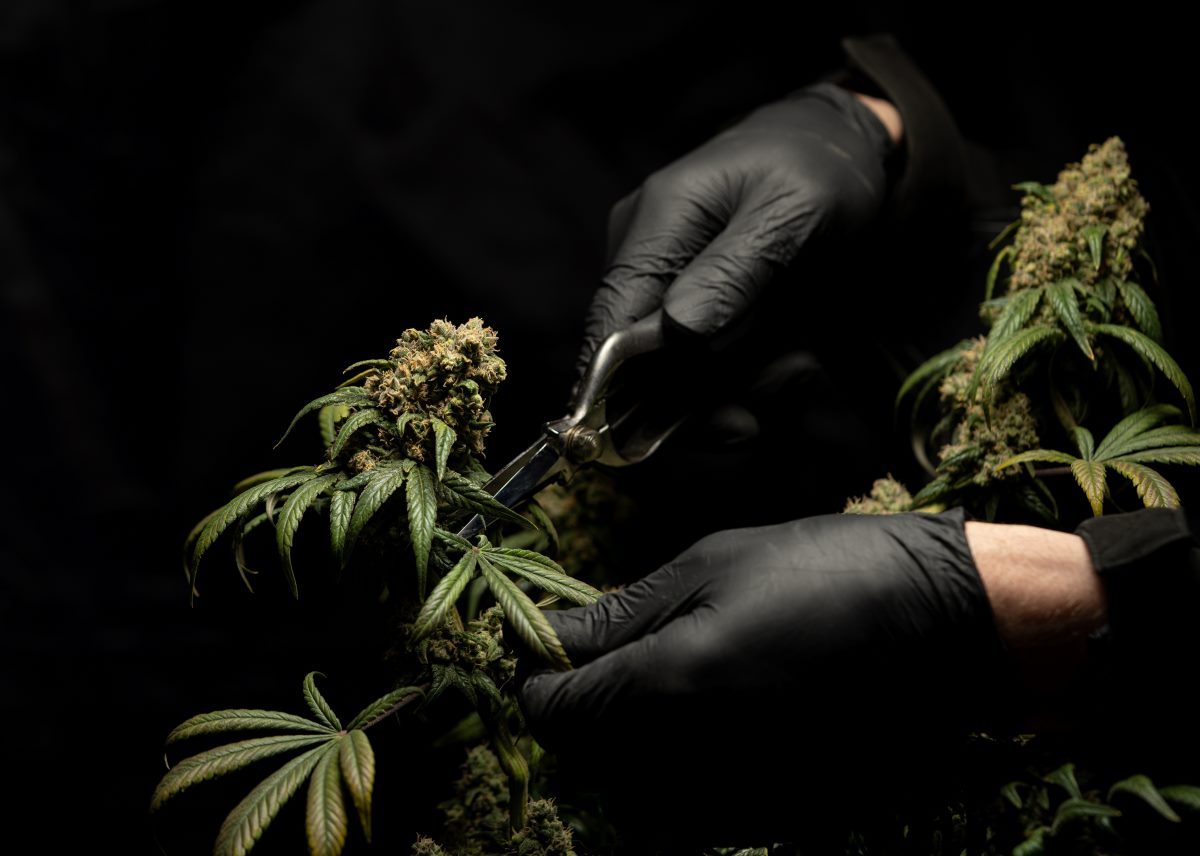
The Science Behind CBG
To fully grasp “what is CBG” and how it works, it’s essential to start with the science behind it. Cannabigerol (CBG) is a distinctive cannabinoid that acts as a building block for other well-known cannabinoids like CBD and THC. This section explores how CBG is created, its role within the cannabis plant, and the health benefits it may offer.
How CBG is Formed?
CBG plays a crucial role in the creation of other cannabinoids. But where does CBG come from?
Biosynthesis of CBG from CBGA (Cannabigerolic acid)
CBG originates from Cannabigerolic acid (CBGA), which is an acidic form of the cannabinoid found in cannabis plants. As the plant grows, CBGA transforms into CBG through a process known as biosynthesis. This transformation typically occurs when the plant is exposed to heat or ultraviolet light, which causes CBGA to break down into CBG and other cannabinoids like THC and CBD.
Role Of Enzymes In Converting CBGA To Other Cannabinoids
Enzymes within the cannabis plant are vital in converting CBGA into various cannabinoids. These enzymes act like catalysts, speeding up the chemical reactions that turn CBGA into CBG, THC, and CBD. The amount and activity of these enzymes dictate the final cannabinoid makeup of the plant. For example, if a plant has more THCA synthase, it will produce higher levels of THC, whereas a plant with more CBDA synthase will result in higher levels of CBD.
CBG in the Cannabis Plant
CBG’s presence in cannabis plants varies significantly depending on the strain and the plant’s growth stage. Understanding these variations is essential for identifying where CBG is most concentrated.
Concentration Of CBG In Different Strains
CBG is typically found in low concentrations in mature cannabis plants, often comprising less than 1% of the plant’s total cannabinoid content. However, some strains are specifically bred to contain higher levels of CBG. These strains are usually harvested earlier in their growth cycle to preserve the CBG before it is converted into other cannabinoids. Strains like White CBG and Super Glue CBG are known for their higher CBG content.
Factors Affecting CBG Levels In Plants
The amount of CBG in a cannabis plant is influenced by several factors, including genetics, harvest timing, and growing conditions.
- Genetics: Certain strains are genetically predisposed to produce more CBG.
- Harvest Timing: Harvesting the plant earlier can result in higher CBG levels, as more CBG is present before it is converted into other cannabinoids.
- Growing Conditions: Factors like light, temperature, and soil quality also impact CBG production. Optimal conditions can lead to higher concentrations of CBG in the plant.
Potential Benefits of CBG
The potential benefits of CBG are broad and promising, though research is still in the early stages. Here are some of the areas where CBG shows potential:
- Anxiety and Depression: CBG might help alleviate symptoms of anxiety and depression by interacting with receptors in the brain that regulate mood. This makes it a potential natural alternative to traditional antidepressants.
- Chronic Pain: CBG’s ability to interact with the body’s pain receptors suggests it could be effective in managing chronic pain. Unlike some pain medications, CBG doesn’t carry the risk of addiction, making it a safer option for long-term use.
- Inflammatory Bowel Disease (IBD): CBG’s anti-inflammatory effect could make it beneficial for treating conditions like Crohn’s disease and ulcerative colitis. By reducing inflammation in the digestive tract, CBG may help alleviate symptoms associated with IBD.
- Glaucoma: One of the earliest studied benefits of CBG is its potential to reduce intraocular pressure, making it a promising treatment for glaucoma. By lowering pressure in the eye, CBG might help prevent or slow down the progression of this condition.
- Huntington’s Disease: CBG is being studied for its potential neuroprotective effects, particularly in conditions like Huntington’s disease. Protecting nerve cells from damage could slow the progression of neurodegenerative diseases.
- Cancer: Some studies suggest that CBG may inhibit the growth of cancer cells, sparking interest in its potential as part of cancer treatment. However, more research is needed to fully understand its effectiveness.
- Bacterial Infections: CBG has shown strong antibacterial properties, particularly against antibiotic-resistant bacteria. This could make it a valuable tool in the fight against infections that don’t respond to traditional antibiotics.
Comparison with Other Cannabinoids
When discussing cannabinoids, CBD and THC often dominate the conversation due to their widespread use. However, Cannabigerol (CBG) is emerging as a cannabinoid with distinct properties that set it apart. Understanding these differences is crucial for appreciating the unique benefits CBG offers.
Unique Therapeutic Properties of CBG
While CBG shares some therapeutic effects with CBD and THC, it also has unique advantages:
- Bacterial Combat: CBG shows strong potential in fighting bacterial infections, particularly those resistant to conventional antibiotics. This makes it a valuable tool in the face of rising antibiotic resistance.
- Neuroprotective Effects: CBG stands out for its ability to protect nerve cells, making it a promising candidate for treating neurodegenerative diseases like Huntington’s disease.
- Appetite Stimulation: Unlike CBD, which can suppress appetite, CBG has been found to stimulate it, benefiting those with conditions like cancer or HIV/AIDS.
Synergistic Effects With Other Cannabinoids (Entourage Effect)
CBG plays a significant role in the entourage effect, where cannabinoids work together to enhance each other’s effects:
- Enhancing Therapeutic Effects: When combined with CBD and THC, CBG can boost their anti-inflammatory and neuroprotective properties, leading to more effective treatments.
- Complementary Role: CBG’s properties often complement other cannabinoids. For example, its anti-inflammatory effects can pair with CBD’s anxiety-reducing effects for a more comprehensive approach to managing stress-related conditions.
- Balancing Psychoactivity: CBG may also help balance the psychoactive effects of THC, making cannabinoid treatments more tolerable by reducing potential side effects like anxiety or paranoia.
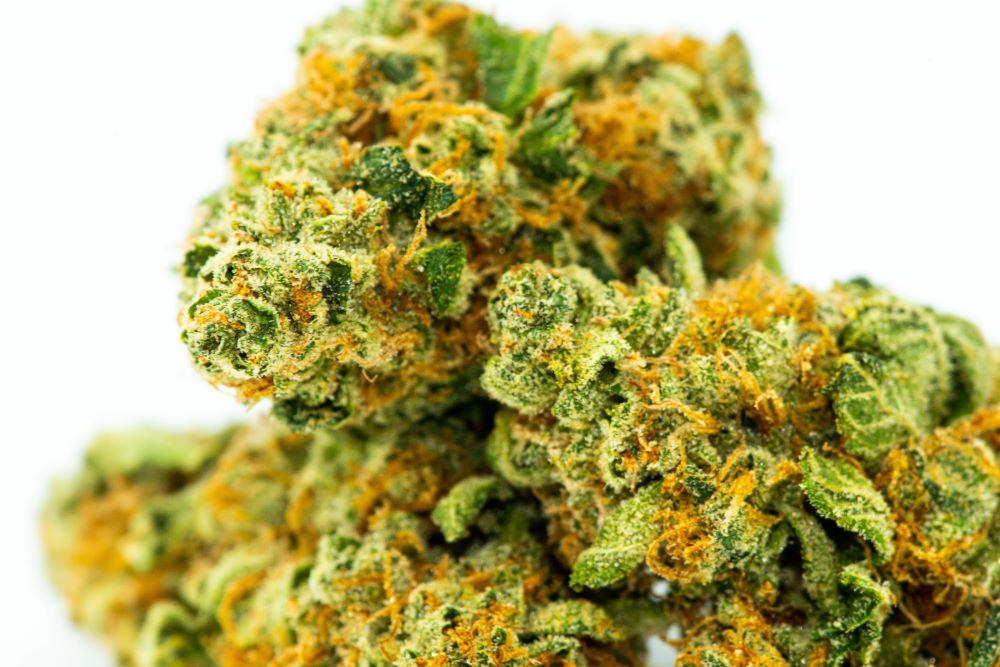
How to Use CBG?
Incorporating CBG into your wellness routine is straightforward, thanks to the variety of product forms available. Whether you’re looking for quick absorption or targeted relief, there’s a CBG product to suit your needs. Understanding the different forms and how to use them will help you make the most of this beneficial cannabinoid.
Forms of CBG Products
- Oils and Tinctures: Taken sublingually (under the tongue) for quick absorption.
- Capsules: Provide a convenient, pre-measured dose for easy daily use.
- Topicals: Creams and balms that can be applied directly to the skin for localized relief.
Dosage and Consumption Methods
When starting with CBG, begin with a low dose and gradually increase until you find the amount that works best for you. This approach allows you to safely gauge your body’s response. Since everyone reacts differently, it might take some time to find the right dosage. It’s also wise to consult with a medical marijuana doctor provider, especially if you’re new to using cannabinoids, to ensure you’re using CBG effectively.
Legal Status of CBG
The legal status of CBG can be complex and varies widely depending on your location. In many regions, CBG is legal if it’s derived from hemp and contains less than 0.3% THC, which is the psychoactive compound in cannabis. However, some countries and states have stricter regulations regarding cannabinoids, even if they are non-psychoactive like CBG. It’s essential to check your local laws before buying or using CBG products. Make sure that any CBG you purchase comes from a reputable source that adheres to legal standards and provides third-party lab testing to verify the product’s content and safety.
Potential Side Effects and Safety
Before using CBG, it’s important to consider its potential side effects and safety. CBG is generally well-tolerated, but some people might experience mild side effects such as dry mouth, fatigue, or changes in appetite.
Potential Risks of CBG
Though CBG is non-psychoactive and generally considered safe, there are some potential risks to be mindful of:
- Limited Research: The long-term effects of CBG are not yet fully understood due to limited research.
- Product Quality Concerns: The CBG market is not fully regulated, which means some products may not be accurately labeled or could contain contaminants. To minimize these risks, it’s essential to buy CBG from reputable sources that provide third-party lab testing, ensuring the product is pure and potent.
CBG vs. CBD
CBG and CBD are two of the most talked-about cannabinoids in the world of natural health, but they serve different purposes in the body. While they share some similarities, each has unique properties that can make one more suitable than the other depending on your health goals.
CBG and CBD interact with the body’s endocannabinoid system but in distinct ways. CBG directly binds with receptors that play a role in regulating mood, pain, and inflammation, potentially making it more effective in certain areas like reducing inflammation and protecting nerve cells. On the other hand, CBD influences these receptors indirectly, contributing to its calming and anti-anxiety effects.
Both CBG and CBD offer a range of health benefits, but their effectiveness can vary depending on the condition being treated.
- CBG: Known for its antibacterial properties, CBG may be more effective in fighting bacterial infections and stimulating appetite. It’s also being studied for its potential in treating glaucoma and other eye-related issues.
- CBD: Widely recognized for its calming effects, CBD is often used to manage anxiety, reduce stress, and improve sleep. It’s also popular for pain relief and reducing inflammation, though through different mechanisms than CBG.
Both cannabinoids have their unique advantages, and in some cases, they might work best when used together, thanks to the entourage effect.
Conclusion
CBG is a fascinating cannabinoid with unique properties that set it apart from others like CBD and THC. While it’s less known, its potential benefits—such as reducing inflammation, protecting nerve cells, and fighting bacterial infections—make it a promising option for natural health. Whether you’re considering CBG for its therapeutic effects or as part of a broader wellness routine, understanding what is CBG, how it works, and how it differs from other cannabinoids can help you make the best choice for your needs. As research continues to uncover more about CBG, its role in health and wellness is likely to grow. If you’re interested in trying CBG, consult with a healthcare professional to ensure it’s the right option for you and to determine the appropriate dosage. With the right guidance, CBG could become a valuable part of your wellness journey.
